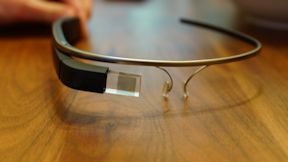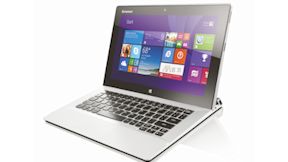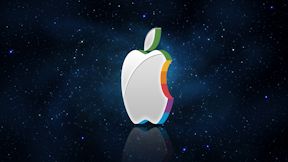|
|
Not feeling creative? Don’t blame technology

Here’s the fear we often have: As technology continues to advance, it is robbing people of their innate creativity. But Greg Satell, a writer with Forbes, argues that this fear is misplaced. Instead, he writes, technology actually can help us enhance our creativity.
More creative today?
Satell says that workers today are expected to be far more creative today than they were a generation ago. At the same time, of course, technology has improved greatly from one generation to the next. As Sartell writes, because technology has automated part of the creative process, it frees us up to be both more creative and more productive.
Not so mysterious
So why do so many worry that technology is eroding our creativity? Satell says part of the problem lies in how people think about the creative process. Many think creativity just happens, like magic. In reality, though, creativity results from its own type of formula. As Satell writes, before people can do something creative, they must first form intent. This can be a marketer trying to spin company news or an artist looking to express an idea. Next, creative people must study their field and their craft. Finally, the most creative among us are masters of synthesizing styles and ideas across varied domains. Satell points to Picasso, who relied on both African and European art to create his masterpieces.
Eliminating barriers
So don’t fear that technology will sap your creativity. Instead, recognize that everything from laptops and smartphones to tablets and cloud computing can free you up to be even more creative than before. Thanks to technology we can all work more productively today. That makes it far easier to tap into our creative sides.
Top ↑
|
Do we have to choose between tech and privacy?

Here’s your choice: You can have advanced technology, technology that can make the world a better place and your business a more efficient and profitable one. Or you can have privacy. Which would you pick?
A dilemma
This is a question that the Huffington Post considered in a recent feature story. The story covered the comments of Mark Penn, executive vice president of advertising and strategy for Microsoft, who was speaking at the HuffPost Live event at Davos. Penn addressed a concern among money today: Is there a way to give people both advanced technology and privacy at the same time?
Why do we have to choose?
As Penn says, people do not want just technology. And they don’t want just privacy. They want both — at the same time. “I don’t think we should think of it as a choice,” Penn said in the Huffington Post story. “People want technology and privacy, and they want a reasonable amount of privacy.”
NSA practices
Penn told the Huffington Post that the issues raised by Edward Snowden have forced people to think more about the spying that the U.S. government does. Snowden has raised important issues: How much spying should the government do? When is spying by the NSA justified? According to Penn, there doesn’t have to be a choice between privacy and technology. Is this realistic? Will the government cut down on its spying? These are questions that have yet to be answered.
Top ↑
|
Is Google Glass about to get some competition?

Is Google Glass about to get some competition? According to a recent story by tech Web site Tech Crunch, it looks like Samsung — one of Google’s chief rivals — is preparing to offer its own glasses-based computing device, a device that would take on Google Glass head on.
Galaxy Glass?
The TechCrunch story cites a report from the Korea Times stating that Samsung is designing what it is calling Galaxy Glass. The Korea Times reported that Samsung hopes to unveil the new wearable computing device during September at the yearly IFA tech conference.
A slow race?
Of course, Google Glass, despite all the press it’s received, is not yet available to consumers. So far, only developers and early adopters have been given access to the wearable computers. And Google is being cautious with the release of Glass. As TechCrunch reports, Google has put out no timeline on when it will launch Google Glass to consumers. It might be, then, that Samsung’s Galaxy Glass would be the first glasses-based computer to hit the consumer market.
Not unusual
Of course, it wouldn’t be unusual for Samsung to get to market first. The company has already done this last year, when its Galaxy Gear was early to market in the smartwatch category. There is a risk with getting to market early, though. The reviews for the Galaxy Gear were decidedly mixed. This begs the question: Will the winner of the glasses-based computing battle be the company that hits consumers first, or will it be the one that releases the better product?
Top ↑
|
Is the Lenova Miix 2 the hybrid for you?

Can’t decide between a laptop and a tablet? Lenovo has a solution for you, its new Lenovo Miix 2, which CNET recently gave a positive review. The main benefit of this machine? It combines the portability of a tablet with the keyboard of a laptop. And it comes at an affordable price.
The right mix?
According to CNET’s review, the Miix 2 is a Windows 8.1 tablet with a keyboard dock. When you want a lighter traveling experience, you can leave the dock behind and simply travel with the tablet portion of the device. When you want to feel as if you are using a laptop? Plug in the keyboard dock.
One angle
The Miix 2 has a lot going for it. But there is one negative: According to CNET, because the tablet fits into a slot at the back of the keyboard, users are left with just one viewing angle. According to CNET’s reviews, this is the biggest drawback — and it’s not too major of one — of the Miix 2’s design.
Options
CNET reports that the Miix 2 will be available in 10-inch and 11-inch sizes. The 11-inch version is a powerful one. CNET says that the 11-inch version can hold up to a fourth-generation Intel Core i5 processor and features up to 256GB of SSD storage. The machine weighs 1.8 pounds without its dock and another 1.2 pounds when the dock is added.
Top ↑
|
Is Apple in the middle of a creative slump?

Is something wrong with Apple? A recent story by AP technology writer Michael Liedtke suggests that Apple might be in the middle of a creative slump. This is an important lesson for any small business: Even the most powerful of companies — Apple — needs to keep innovating. Businesses that don’t run the risk of losing their relevance. And when that happens? The customers might disappear, too.
Apple’s challenges
The AP story says that Apple is enjoying strong sales of iPhones and iPads. But these sales, the story says, masks a bigger problem: Apple has stopped innovating. As Liedtke writes, the tech giant needs to create some new products that again capture the attention of consumers. That hasn’t happened since the launch of the iPad.
Slumping numbers
Liedtke points to rumbles on Wall Street that Apple, despite its big sales numbers, is in a creative slump. According to the AP story, Apple is mostly selling its mobile devices to repeat customers who are upgrading to new generations of devices. What Apple isn’t doing is bringing in customers who have not already invested in Apple products.
Your business
Apple’s story should entice you to look closely at your own small business. Are you treading water, hanging on to the same customers? Or are you innovating and constantly grabbing new customers? If you’re not making new converts your small business might struggle in today’s challenging economy.
Top ↑
|
|






Leave a Reply
Want to join the discussion?Feel free to contribute!